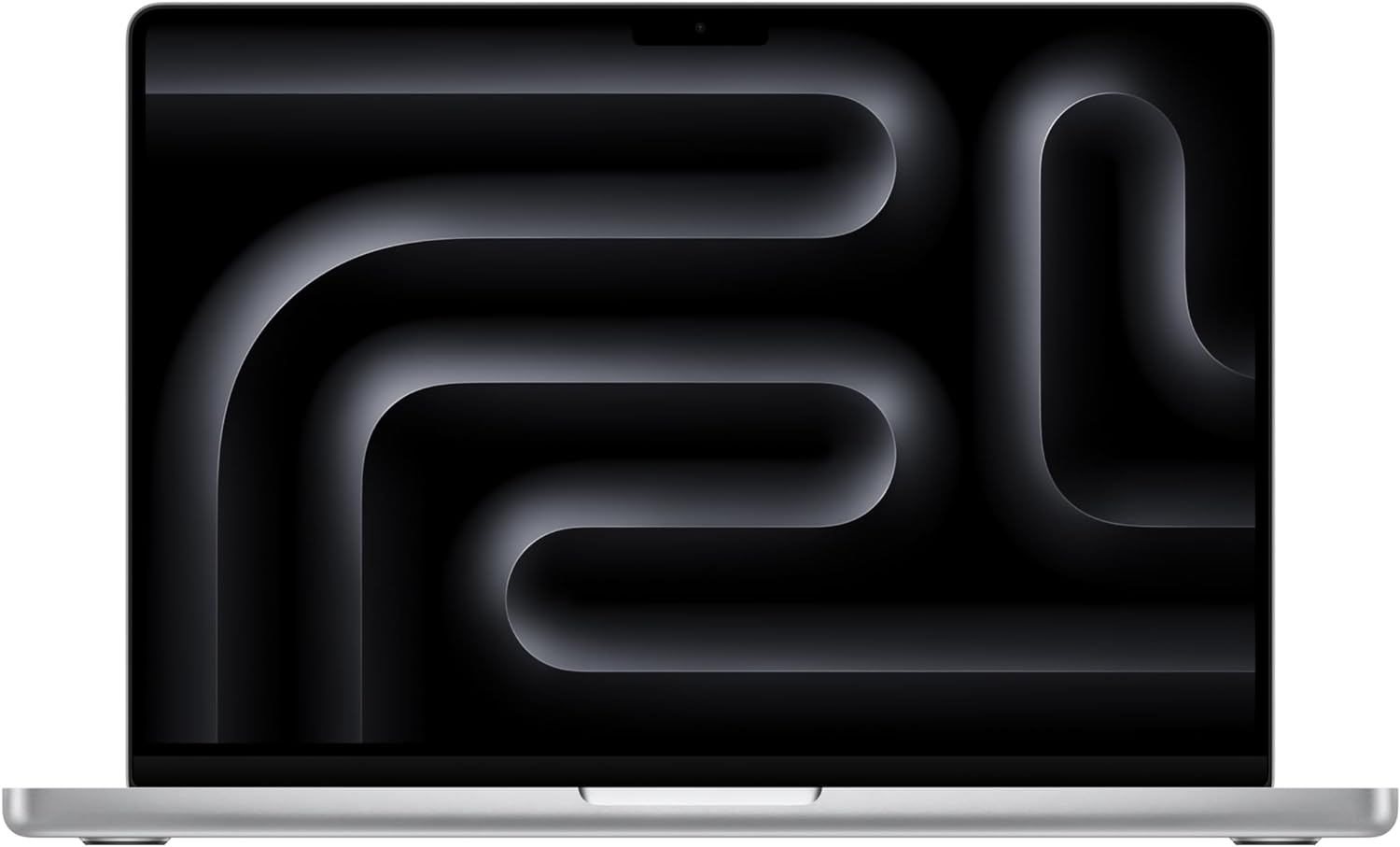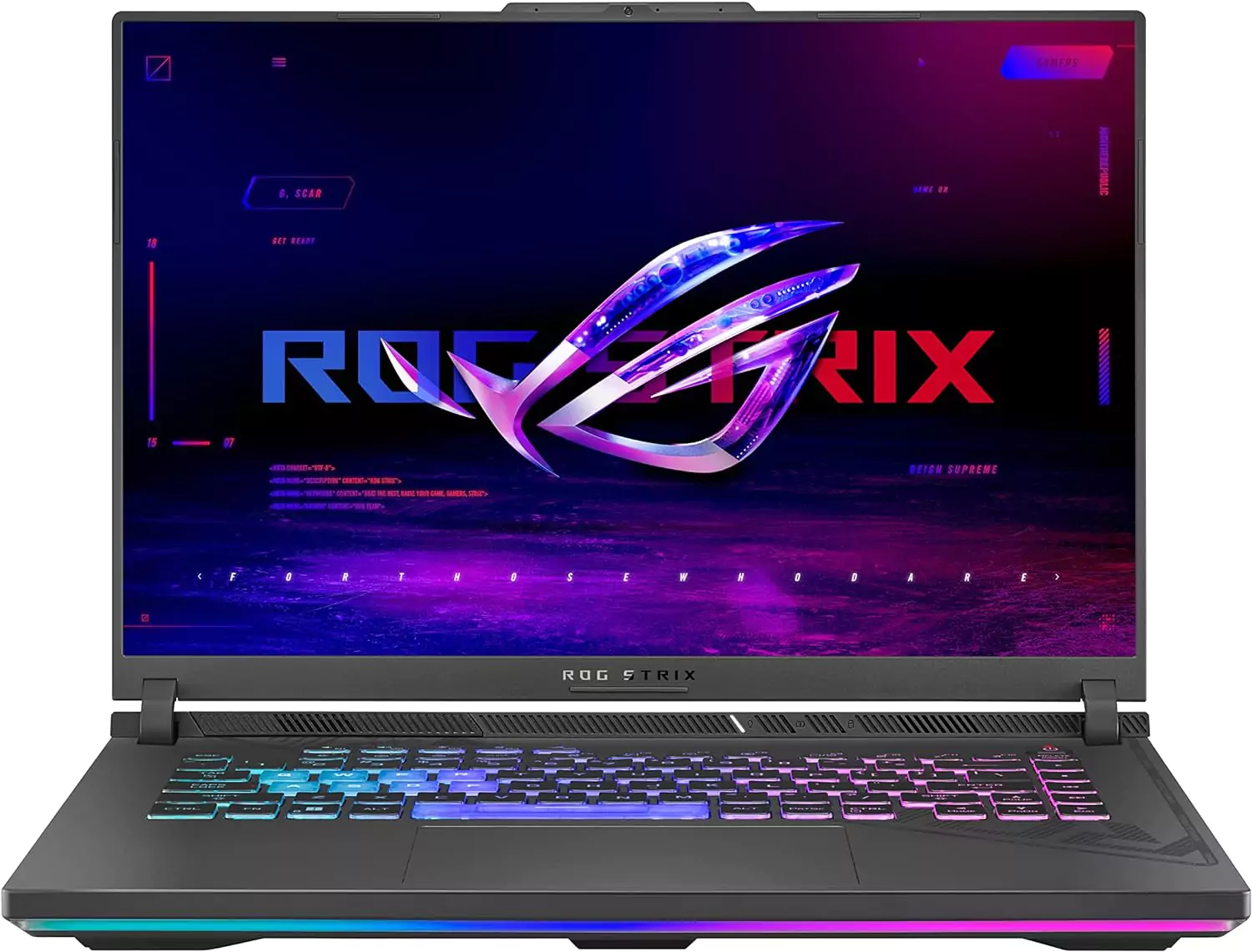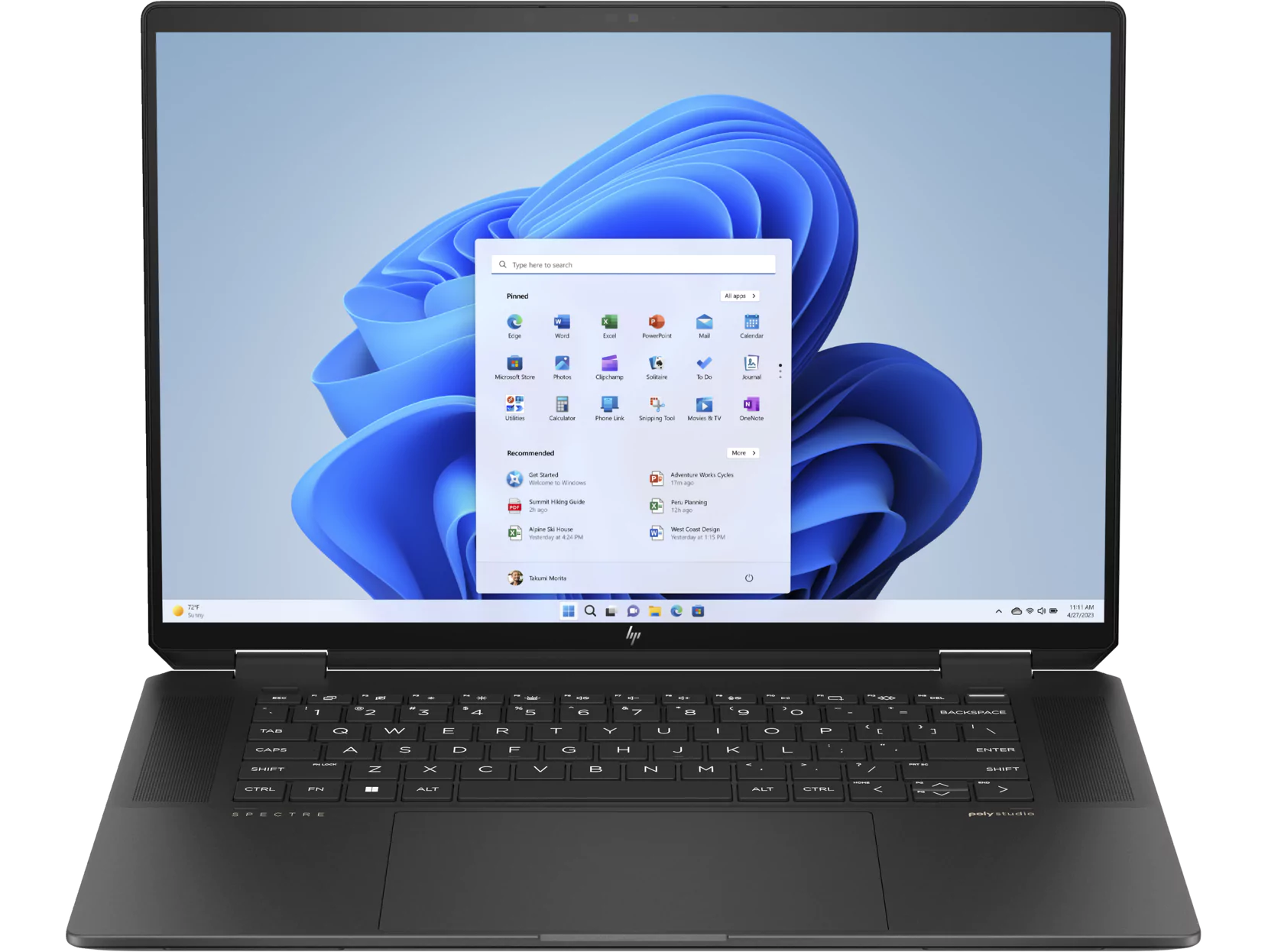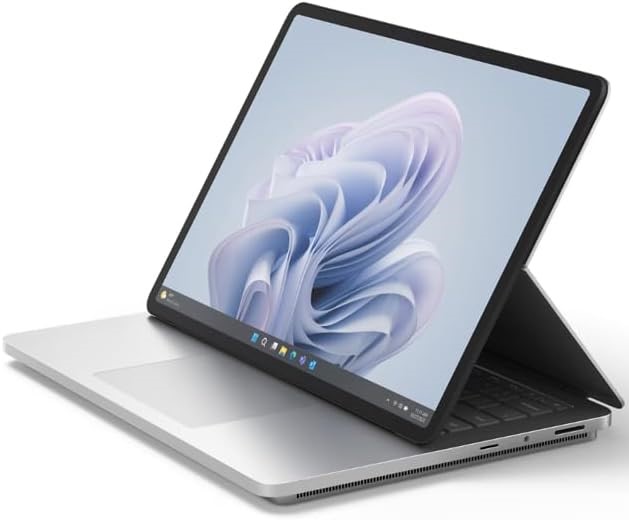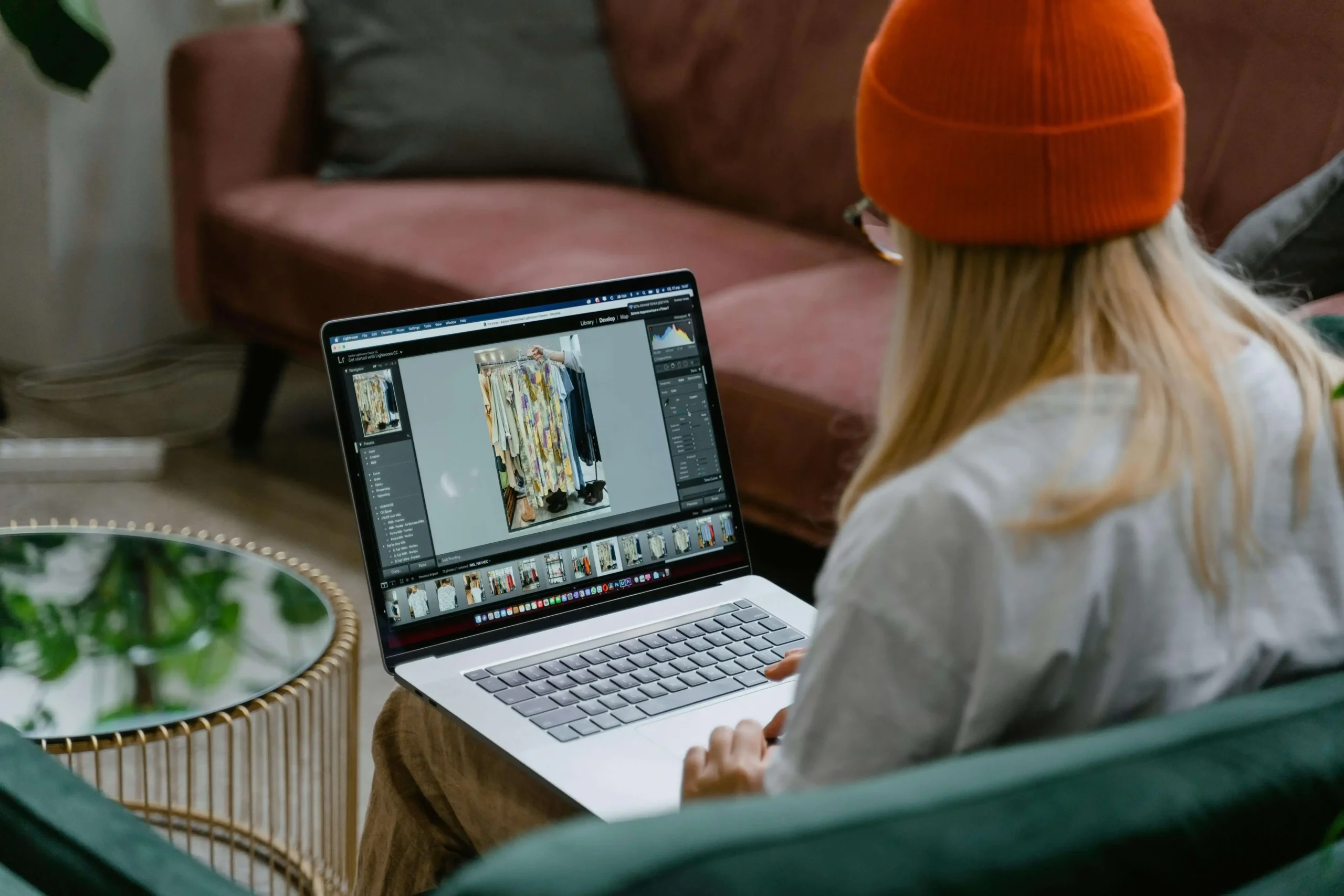
Are you in the market for the best laptops for photo editing that can effortlessly handle demanding, resource-intensive photo editing software like Adobe Photoshop and Lightroom? These top-performing laptops promise the best possible experience. However, the best laptop isn’t just about stellar performance, which we’ll discuss in a moment – it’s about the overall user experience. Additionally, all the models we’ve tested are thin and light and were packed with power in a sleek package, making them perfect for taking wherever you go. This ensures your creative workflow remains uninterrupted, no matter where you are. Whether you’re a photographer, designer, or digital artist, we’ve got the right place.
The market is flooded with countless models, making it overwhelming to choose the right one. But don’t worry—we’ve done the heavy lifting for you. After thorough research and rigorous testing, our experts have handpicked these top selections, ranging from the best budget options to the most portable choices and beyond. To identify the best laptops, our team conducted various performance benchmarks. We even edited images on Adobe Photoshop on each laptop to offer the most realistic experience possible.
Quick Shopping Tips For Best Laptops For Photo Editing:
- Display: A high-resolution 14 to 16-inch display with color accuracy certification, such as Adobe RGB or DCI-P3, is essential for accurate color grading and fine-tuning of images.
- CPU: A latest-generation high-performance CPU is vital for ensuring that photo editing software runs smoothly and efficiently.
- GPU: For professional-level editing, having a dedicated GPU is essential to handle more intensive tasks and effects in photo editing software.
- Storage: Fast and ample storage is necessary to manage large RAW image files without slowing down the system.
- Connectivity: Fast data transfer ports are essential for quickly transferring large files, and DisplayPort (DP) is particularly important for a full editing setup with external monitors.
- Portability & Battery: Important for users who travel or work remotely.
Best Laptops For Photo Editing in 2024: Reviewed and Tested:
Apple MacBook Air 14-inch (M3, 2023)
Specifications:
| SPEC | |
|---|---|
| CPU | Apple M3 Chip |
| Graphics | Integrated 10-core GPU |
| RAM | 8GB Unified Memory |
| Display | 14.2-inch (3024×1964) Liquid Retina XDR display |
| Storage | 512GB SSD |
| Weight | 3.4 Pounds (1.55 kg) |
The Apple MacBook Air 14-inch (M3, 2023) is today the star of the show in photo editing competition it gets this position by not just the performance but the overall balance of all of the core factors that when combined make an optimal experience by cutting-edge performance with unmatched portability. Our tests show that the latest M3 processor significantly boosts efficiency and provides us with seamless editing of high-resolution images and smooth handling of 4K video projects. This model’s GPU prowess supports complex layers and effects in editing software like Adobe Photoshop without a hitch, confirming its suitability for professional creatives who demand precision and speed.
Equipped with a vibrant, color-accurate display, the MacBook ensures that every detail of your edits is crisp and true to life. Its portability is a major advantage, as the laptop’s light build and long-lasting battery make it ideal for photographers and editors on the move. However, while the port selection has improved, some users might still miss the USB-A port, though this is a minor quibble given the machine’s overall capabilities.
During our comprehensive testing, the MacBook Air proved itself repeatedly. Its robust build and fast storage options facilitate a hassle-free workflow, critical when dealing with large RAW files. Despite its many strengths, we found the display slightly less impressive in very dim settings. Overall, with its blend of performance, display quality, and battery life, the MacBook Air 14-inch (M3, 2023) stands out as a formidable tool for photo editing professionals.
Acer Swift 3 14-inch (SF314-71-51NN)
Specifications:
| SPEC | |
|---|---|
| CPU | Intel Core i5-12500H |
| Graphics | Intel Iris Xe |
| RAM | 8GB LPDDR5 |
| Display | 14-inch (2880×1800) 90Hz OLED Display |
| Storage | 512GB SSD |
| Weight | 3.09 Pounds |
The Acer Swift 3 14-inch stands out in the budget category list of photo editing laptops by delivering a well-rounded performance that punches above its weight class. During our extensive hands-on testing, the Swift 3 demonstrated its prowess in handling demanding photo editing software like Adobe Photoshop and Lightroom with ease, thanks to its robust Intel i7-1370U CPU and vivid OLED display. The true-to-life color reproduction on the screen makes it a joy to fine-tune details in high-resolution images, especially for those who do color gradding.
Portability is another hallmark of this model. Its lightweight design, combined with a battery life that surpasses a full workday, allows creative professionals to edit on the go without seeking out power outlets. This makes the Swift 3 a reliable companion for field photographers or traveling creatives who need a powerful editing tool that keeps up with their mobile lifestyle. However, while the 8GB of RAM suffices for most tasks, those working with particularly large files or multitasking heavily may find it limiting, a minor trade-off for such an affordable unit.
Despite its many strengths, the Swift 3 is not without its quirks. This runs warm under continuous heavy use, and the built-in speakers offer mediocre sound quality we recommend using headphones, which could be a drawback during video editing sessions that rely on audio cues. Nonetheless, for photo editing, where visual precision and color accuracy are paramount, these issues are overshadowed by the laptop’s performance and display capabilities. Whether upgrading from an older model or choosing a first serious editing laptop, the Acer Swift 3 proves that budget doesn’t have to mean compromise, especially for those who value efficiency and portability.
ASUS ROG Strix G16 (2024)
Specifications:
| SPEC | |
|---|---|
| CPU | Intel Core i7-13650HX |
| Graphics | NVIDIA GeForce RTX 4060 |
| RAM | 16GB DDR5 |
| Display | 16-inch FHD (1920×1200) 165Hz Display |
| Storage | 1TB SSD |
| Weight | 5.51 Pounds |
The ASUS ROG Strix G16 (2024) stands out as a top contender in the Windows laptop lineup for photo editing, blending powerful performance with reliable cooling. Armed with an Intel i7-13650HX and NVIDIA RTX 4060, it delivers smooth editing of high-resolution images and handles complex tasks in software like Adobe Photoshop without breaking a sweat. The 16GB DDR5 RAM ensures seamless multitasking, while the MUX Switch optimizes performance, making it ideal for professionals who need speed and precision in their work.
The 16-inch FHD display, with 100% sRGB color accuracy, offers sharp visuals for most editing tasks, though a higher resolution. It is a must-have as it is within the budget and for more detailed work. Portability is where the Strix G16 falters slightly. Its 4-pound build and 5-hour battery life limit its convenience for on-the-go use, but the advanced cooling system makes it perfect for long, intensive editing sessions at a desk.
Additionally, the sturdy plastic design and the wide variety of ports, add to its practicality. However, those seeking long-lasting battery life or a more portable option might find the Strix G16 less suited to their needs. Overall, if you are okay with the bulky desk and shorter battery life, then this is a great deal.
HP Spectre x360 2-in-1
Specifications:
| SPEC | |
|---|---|
| CPU | Intel Core Ultra 7 155H |
| Graphics | NVIDIA GeForce RTX 4050 |
| RAM | 16GB DDR5 (onboard) RAM |
| Display | 16-inch (2880×1800) 120Hz OLED display |
| Storage | 1TB NVMe SSD |
| Weight | 4.3 Pounds |
The HP Spectre x360 2-in-1 (2024) is a high-performance device tailored for photo editing and creative tasks. Its 16-inch OLED display, boasting a 2.8K resolution, delivers impeccable color accuracy and vivid contrast—essential for photo editors who demand precision. The 120Hz refresh rate ensures smooth image transitions and detail, while the 16:10 aspect ratio offers ample workspace. While its color range is near-perfect, the display’s brightness could be higher, which may cause minor issues in bright environments.
Performance is driven by the Intel Core Ultra 7 155H processor and NVIDIA RTX 4050 GPU, which handle complex editing tasks effortlessly. While the GPU is capped at 55W, limiting it slightly compared to gaming laptops, it’s more than enough for editing high-resolution images and video. HP has made notable improvements over its previous generation, but the lack of a full-powered GPU may still deter some users from expecting extreme 3D rendering performance. Despite this, in real-world use, the Spectre x360 breezes through Adobe Creative Suite applications without noticeable slowdowns.
Portability and battery life are impressive, especially considering the large OLED display. With over 10 hours of battery life under regular use, the Spectre x360 is highly reliable for working on the go. However, its slightly bulkier size makes using it as a tablet a bit cumbersome, and the absence of an SD card slot might be a downside for photographers. Still, the versatile 2-in-1 design, solid build quality, and professional-level performance make this laptop a top choice for creatives.
Microsoft Surface Laptop Studio 2
Specifications:
| SPEC | |
|---|---|
| CPU | Intel Core i7-13800H |
| Graphics | NVIDIA GeForce RTX 4060 |
| RAM | 64GB LPDDR5X |
| Display | 14.4-inch (2400×1600) 120Hz Display |
| Storage | 1 TB SSD |
| Weight | 4.37 Pounds |
The Surface Laptop Studio 2 is designed for creatives, particularly photo editors, who require both performance and versatility. The standout feature is its unique pull-forward display, transforming it from a traditional laptop into an intuitive tablet mode for drawing and editing. The 14.4-inch PixelSense Flow display boasts a 2400×1600 resolution, delivering excellent color accuracy and a 120Hz refresh rate, ideal for photo editing. While not 4K, the screen offers vibrant colors and high contrast, making it more than capable of handling detailed editing tasks. The experience is further enhanced by its fluid touch and pen input, though the pen comes at an additional cost.
Performance-wise, the Surface Laptop Studio 2 is powered by the Intel Core i7-13700H and the NVIDIA RTX 4060 GPU, which, while not a high-end gaming GPU, provides sufficient power for photo editing in Adobe Creative Cloud applications. However, the laptop shines only when performance mode is enabled, delivering faster rendering and multitasking capabilities. The 64GB RAM option ensures that even the most demanding workloads are handled smoothly. Still, the laptop does tend to heat up under heavy use, which can be a minor drawback during extended sessions.
Portability and battery life are strong points for this laptop. Weighing 4.37 pounds, it’s relatively light for a 2-in-1 device of this caliber, though using it as a tablet for long periods can be uncomfortable due to the weight. The battery life exceeds 10 hours in typical use, allowing a full day of work without recharging. However, the lack of included accessories, like the pen and its high price point could be deal breakers for some. Yet, with its premium build, excellent audio quality, and thoughtful design, the Surface Laptop Studio 2 stands as a versatile tool for creatives on the go.
Other laptops we’ve tested:
Best Workstation for Photo Editing:
MacBook Pro 16-inch M3 Max: The Apple MacBook Pro 16-inch is the ultimate workstation laptop for photo editing, powered by the latest M3 Max chip that effortlessly handles demanding tasks like graphic design and video editing. Its stunning Retina display offers unmatched color accuracy and detail, which is perfect for professionals. With an incredible 22-hour battery life, you can work all day without interruptions. The six-speaker system enhances the experience with immersive sound, while the sleek design and premium build quality make it a standout choice for creatives seeking performance and style in a single package.
Best Large Screen Laptop for Photo Editing:
MSI Titan GT77 17-inch: The MSI Titan GT77 is a powerhouse designed for professionals who need a large, stunning display for photo editing. Its 17.3-inch 4K UHD Mini LED display with 100% DCI-P3 color accuracy and 144Hz refresh rate ensures breathtaking clarity and vivid colors, ideal for intricate edits. Powered by the Intel Core i9-13980HX and NVIDIA RTX 4080, it delivers exceptional speed and performance, easily handling the most demanding photo editing tasks. With 64GB DDR5 memory and Thunderbolt 4, this laptop is perfect for creatives who demand top-tier performance, screen quality, and responsiveness in a large format.
Best Dual-Screen Laptop for Photo Editing:
Asus Zenbook Duo 14-inch (2024): The Asus Zenbook Duo 14-inch (2024) redefines productivity with its innovative dual 14″ OLED 3K displays. Perfect for photo editors, its 120Hz refresh rate and 100% DCI-P3 color accuracy ensure stunning, precise visuals. Powered by the Intel Core Ultra 9-185H and Intel Arc graphics, this laptop handles demanding tasks seamlessly. Weighing just 3.64 lbs and featuring a sleek, portable design, it’s ideal for creatives who need versatility, performance, and an immersive screen to enhance their workflow.
Buying Guide For Best For Laptops Photo Editing:
Display: Critical for Color Accuracy
- Why It Matters: For photo editing, the display is not just a screen; it’s your window to ensure that colors and details are accurately represented. A high-quality display helps in precise color grading and image manipulation, which is crucial for professional work.
- Recommendation: Opt for laptops with a 14 to 16-inch display that offers a high resolution and is certified for color accuracy, such as Adobe RGB or DCI-P3. These specifications ensure that the colors you see on the screen are as close as possible to real-life hues and the final print output.
CPU: The Power Behind Performance
- Why It Matters: A high-performance CPU ensures that all your photo editing software runs smoothly, without lag, thereby improving efficiency and reducing frustration during complex editing tasks.
- Recommendation: Look for the latest generation high-performance processors such as Intel’s i7 or i9 series, or AMD Ryzen 7 or 9 series. These CPUs are designed to handle multiple tasks and intensive software, making them ideal for photo editing.
GPU: Essential for Intensive Tasks
- Why It Matters: A dedicated GPU accelerates graphics processing, crucial for rendering high-resolution images and effects swiftly in photo editing software.
- Recommendation: Ensure your laptop has a dedicated graphics card like NVIDIA’s GeForce RTX or AMD Radeon Pro series. These GPUs provide additional power needed for more intensive photo editing tasks and effects.
Storage: Fast Access to Large Files
- Why It Matters: Photo editing often involves dealing with large RAW files, which require fast and ample storage to ensure smooth access and efficient editing without system slowdowns.
- Recommendation: Choose laptops with at least 512GB of SSD storage. SSDs offer quicker boot times and faster data access speeds than traditional hard drives, significantly enhancing overall performance.
Connectivity: Efficient File Transfers
- Why It Matters: Efficient connectivity options are crucial for photographers who need to quickly transfer high-resolution images between devices or connect to high-definition external displays.
- Recommendation: Look for laptops equipped with Thunderbolt 4 or USB-C ports for fast data transfer, and consider models with DisplayPort outputs for seamless connection to high-resolution external monitors for a more detailed editing workspace.
Portability & Battery: Editing on the Go
- Why It Matters: For photo editors who travel or prefer to work from different locations, a laptop’s weight and battery life are significant considerations.
- Recommendation: Seek laptops that weigh under 4 pounds and offer a long battery life. Models that provide around 8 hours of battery life on basic tasks are enough for most of users.
- Note: Laptops with high-end specs and powerful GPUs are more power-hungry, so having a short battery life is normal. Keep that in mind.
How Do We Test Laptops?

At GreatTech, we don’t just rely on benchmarks; we rigorously test each laptop in real-world scenarios to mirror how you would use it. With over 11 years of experience and 21,315 hours spent testing more than 1,100 laptops, our team of experts ensures every recommendation is backed by thorough, practical insights.
- Performance Evaluation: We assess laptops using trusted benchmarks and real-world applications, ensuring they can handle everything from professional tasks to gaming.
- Display Quality: We use precise tools like colorimeters to measure color accuracy, brightness, and viewing angles, providing a clear understanding of display performance in various conditions.
- Battery Life Testing: We conduct standardized tests across different usage patterns, giving you realistic expectations of how long the battery will last in everyday use.
- Portability & Build Quality: We evaluate each laptop’s design, materials, and ergonomics to ensure it’s both durable and comfortable for long-term use.
Read More about our review process here: How We Test Laptops
FAQ’s (Frequently Asked Questions)
Is a 4K display necessary for photo editing on a laptop?
While a 4K display isn’t necessary, it can significantly enhance the photo editing experience. A 4K screen provides higher resolution, which translates to sharper, more detailed images, making it easier to fine-tune details. However, a high-quality display with excellent color accuracy (e.g., Adobe RGB or DCI-P3 coverage) is even more important than just resolution. If budget is a concern, a laptop with a high-quality QHD or 1080p display that offers color accuracy and calibration features can still be effective for professional photo editing.
What screen size is ideal for a photo editing laptop?
The best screen size for photo editing generally falls between 14 and 16 inches. A 15.6-inch display strikes a good balance between portability with performance, giving you enough space to comfortably work on detailed images without making the laptop too bulky. Larger screens like 17 inches can be great for dedicated workstations but may compromise portability. Additionally, ensure the display supports good color accuracy, brightness, and resolution for optimal editing results.
What type of GPU is best for photo editing laptops?
For most professional photo editing tasks, having a dedicated GPU (Graphics Processing Unit) enhances performance, particularly for GPU-accelerated features in software like Adobe Photoshop and Lightroom. Laptops with NVIDIA RTX series GPUs (such as the RTX 3050 or higher) or AMD Radeon series are ideal, as they can handle tasks like rendering, 3D effects, and smooth performance when working with high-resolution images. While integrated graphics are sufficient for basic editing, a dedicated GPU is recommended for professional-level editing.
What specifications should a photo editing laptop have?
For most professional photo editing tasks, having a dedicated GPU (Graphics Processing Unit) enhances performance, particularly for GPU-accelerated features in software like Adobe Photoshop and Lightroom. Laptops with NVIDIA RTX series GPUs (such as the RTX 3050 or higher) or AMD Radeon series are ideal, as they can handle tasks like rendering, 3D effects, and smooth performance when working with high-resolution images. While integrated graphics may suffice for basic editing, a dedicated GPU is recommended for heavy editing workflows.
What specifications should a photo editing laptop have?
A good photo editing laptop should have:
CPU: A fast, latest-generation processor (Intel Core i7/i9 or AMD Ryzen 7/9) to handle multitasking and processing large files.
RAM: At least 16GB of RAM is recommended for smooth multitasking, though 32GB is ideal for heavy-duty editing.
Storage: A 512GB SSD or larger for fast access to files and storage of high-resolution images. 1TB is preferable if you work with large RAW files.
Display: A high-resolution (QHD or 4K) display with good color accuracy (e.g., Adobe RGB or DCI-P3).
GPU: A dedicated graphics card like the NVIDIA RTX 3050 or higher for professional-level performance.
Are Macs or PCs better for photo editing?
Both Macs and PCs have their strengths when it comes to photo editing. Macs are popular in creative industries for their reliable performance, high-quality Retina displays, and seamless integration with software like Adobe Creative Cloud. The Apple MacBook Pro, in particular, is a favorite for its color accuracy and long battery life. PCs, on the other hand, offer more customization options, often come at a lower price point for similar specs, and provide a wider variety of models to suit different budgets. High-end PCs with powerful processors and GPUs can rival any Mac for photo editing.
Is a touchscreen laptop useful for photo editing?
Yes, a touchscreen can be very useful for photo editing, particularly for tasks that require precision, such as retouching or masking. Many laptops now come with stylus support, allowing you to interact more naturally with editing software. Laptops like the Microsoft Surface Laptop Studio 2 or Asus Zenbook Duo are great examples, offering stylus input and touch functionality that can enhance workflow and give more control to professional photo editors.
Conclusion:
- Gorgeous display with vivid colors
- Good thermals
- Varitey of ports
- Easy to carry around
- Great keyboard and touchpad
- Soldered RAM and Storage
- Short key travel can cause fatigue








